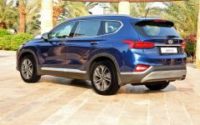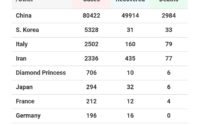Huawei Releases The Industry’s Most Powerful “1+1” Antennas, Enabling Ultra-Lean Site In 5G Era
Huawei released the most powerful “1+1” antennas at MWC 2019, including the industry’s first 30 ports antenna, the industry’s smallest FDD 4T4R+TDD 8T8R converged antenna, and the industry’s first fully integrated ultra-wideband multi-sector antenna. These products satisfy maximal configuration for all frequency bands supported by a single passive antenna in different scenarios, reserve space for 5G Massive MIMO deployment, and immediate 5G activation.
Based on the three 5G antenna platforms, Munich platform, London platform, and Bangkok platform, Huawei released the following three higher-profile antenna products during the congress.
Munich platform: The smallest 30 ports antenna, supports full-band 4T4R deployment on Sub-3 GHz bands and independent adjustment of each band’s coverage. It is suitable for operators with rich spectrum resources or antenna sharing scenario.
London platform: With the length of only 1.5 meters, one antenna supports FDD 4T4R and TDD 8T8R deployment, builds 5G extreme lean site and realizes 5G evolution with zero antenna space addition, enables rapid 5G activation.
Bangkok platform: It is designed for the next-hop of FDD capacity expansion solution, improving site capacity by more than 2.5 times. One antenna supports flexible 4T4R 6-sector and 4T4R 3-sector hybrid configuration, maximizing both spectrum efficiency and site resource utilization.
At the beginning of 2018, Huawei was the first to propose the concept of “1+1 antenna, go for 5G” and released 5G-oriented full-scenario “1+1” antenna solutions. These solutions aim to resolve 5G site evolution problems such as insufficient space, high TCO, and difficult acquisition, and enable 5G ultra-lean site deployment. To meet these requirements, Huawei has invested more in R&D, developed many leading technologies, and applied them the new products.
Innovative architecture reduces antenna size. Multi-layer interleaved design reduces the size of FDD/TDD converged antenna by about 50% compared with traditional architecture. Compact side-by-side array architecture, with over 10% less width than any similar architectures in the industry, realizes smaller size but 2dB higher gain.
Leading-edge technologies improve performance and reliability. The AirMAX feeding network technology improves radiation efficiency by 18% and greatly improves the antenna reliability and production efficiency.
Basic technologies research enables antenna’s continuous evolution. MQ4/MQ5 cluster connector, which has been selected as the 5G early deployment solution by NGMN, enables the development of 5G antennas with 10+ bands, greatly simplifies antenna installation and maintenance; New radome material GFRPP, which is 40% lighter than the traditional fiberglass, keeps multi-band antenna weight less than 50kg to avoid antenna hoisting, and saves installation time and cost.
Mr. Zhang Jiayi, President of Huawei Antenna Business Unit, said that “We deeply understand that antenna space problem is the bottleneck of 5G site deployment. Therefore, Huawei has spared no effort in antenna R&D and innovation to offer industry-leading ‘1+1’ antenna solutions, to enable 5G ultra-lean site deployment, help operators achieve business success in 5G era.”
MWC 2019 runs from February 25 to February 28 in Barcelona, Spain. Huawei showcases its products and solutions at booth 1H50 in Fira Gran Via Hall 1, booth 3I30 in Hall 3, the Innovation City zone in Hall 4, booth 7C21 and 7C31 in Hall 7. For more information, please visit http://carrier.huawei.com/en/events/mwc2019







